
Balabac Island, located at the southernmost tip of Palawan, is one of the last frontiers for adventurous travelers seeking untamed beauty in the Philippines. Known for its pristine beaches, crystal-clear waters, and rich biodiversity, Balabac Island Palawan is often described as paradise, offering experiences for those who love nature, snorkeling, island-hopping, and the feeling of discovering somewhere truly off the beaten path.
In this comprehensive travel guide, we will explore everything you need to know about Balabac Island—from how to get there, where to stay, the best beaches, and what to do while you’re there. Whether you’re planning a quick trip or an extended adventure, this guide will provide valuable insights to ensure you make the most of your time in Balabac Island Palawan.
Table of Contents
Where is Balabac Island?
One of the most common questions for those curious about this untouched paradise is: Where is Balabac Island?
Balabac Island is situated in the southwestern part of Palawan, the Philippines’ most western province. This archipelago consists of more than 30 islands, all surrounded by turquoise waters and vibrant coral reefs. It lies near the maritime borders of Malaysia, making it geographically isolated from the bustling hubs of Palawan, such as Puerto Princesa and El Nido. To put it into perspective, Balabac Island Palawan is about 70 kilometers from the southern tip of the Palawan mainland.
This remoteness is what gives Balabac Island its untouched, almost magical allure. Travelers will find themselves far from the crowds and surrounded by nature’s most pristine creations.
A Brief History of Balabac Island
Balabac Island has a fascinating history tied to its strategic location along trade routes. In the past, these islands were used as stopping points by traders from Borneo and other parts of Southeast Asia. Indigenous groups, particularly the Molbog people, have long inhabited the island, thriving off fishing and trading with neighboring islands.
During colonial times, Balabac Island was used as a defensive point due to its proximity to the Sulu Sea. The island also saw the presence of the Spanish and later the Americans, contributing to the diverse cultural and historical influences that can still be felt today.
Although Balabac Island Palawan is steeped in history, the modern era has seen little development, preserving much of its natural charm. This makes it an ideal destination for travelers who want to experience nature in its most authentic form.
Quick Facts About Balabac Island
To give you an overview of what to expect, here are some quick facts about Balabac Island:
- Size: Balabac is approximately 52 kilometers long and 26 kilometers wide.
- Biodiversity: The island is home to a variety of unique wildlife species, including the Philippine Mouse Deer (locally known as “pilandok”) and dugongs.
- Population: The population is sparse, with several indigenous groups living in small communities.
- Main Economic Activity: Fishing remains the primary source of livelihood, though tourism is slowly growing.
- Remoteness: Due to its isolated location, accommodations and services are basic, but that’s part of its appeal.
Best Time to Visit Balabac Island
When planning your trip, knowing the best time to visit Balabac Island is crucial to enjoying its full potential. The island experiences a tropical climate, with two main seasons: the dry season and the wet season.
Dry Season (November to May)
The best time to visit Balabac Island Palawan is during the dry season, from November to May. During these months, the weather is calm, with clear skies and minimal rainfall. This is perfect for island-hopping, snorkeling, and beach exploration. March to May, in particular, sees warm, sunny days ideal for outdoor adventures.
Wet Season (June to October)
While it’s possible to visit Balabac Island during the wet season, travelers should be prepared for heavier rainfall, rougher seas, and potential storms. Some tours and boat services may be canceled during this time. However, if you’re seeking solitude and don’t mind the rain, you might enjoy lower rates and fewer tourists.
How to Get to Balabac Island
Getting to Balabac Island is a bit of an adventure, as the island is remote and not directly accessible by commercial flights. However, with careful planning, the journey can be a rewarding experience. Here’s a detailed guide on how to get to Balabac Island Palawan and a breakdown of the typical travel expenses you’ll encounter.
Step 1: Manila to Puerto Princesa, Palawan
The first step in reaching Balabac Island is flying to Puerto Princesa, the capital of Palawan. There are daily flights from major cities like Manila, Cebu, and Clark to Puerto Princesa.
- Airfare Cost:
- From Manila: Flights typically range from PHP 1,500 to PHP 4,500 (USD 30–80) one way, depending on the season and how early you book.
- From Cebu: Expect to pay PHP 2,000 to PHP 5,000 (USD 40–90) for a one-way ticket.
Booking early and during non-peak seasons can help reduce these costs.
Step 2: Overland Travel from Puerto Princesa to Rio Tuba
Once in Puerto Princesa, you’ll need to travel overland to Rio Tuba, which serves as the jumping-off point for boats to Balabac Island. The journey from Puerto Princesa to Rio Tuba takes about 5-6 hours by van or bus.
- Van Transfer:
- Vans are the fastest option, typically costing PHP 600 to PHP 1,000 (USD 11–18) per person. Vans depart frequently from the San Jose Terminal in Puerto Princesa.
- Bus Option:
- Buses are cheaper but take longer, usually costing around PHP 400 to PHP 700 (USD 8–14).
Make sure to leave Puerto Princesa early in the morning to ensure you catch the boat from Rio Tuba to Balabac.
Step 3: Boat Ride from Rio Tuba to Balabac Island
From Rio Tuba, you’ll take a boat to Balabac Island. The boat ride can take anywhere from 4 to 5 hours, depending on weather and sea conditions. Public ferries and private boats are available, though public options are more budget-friendly.
- Public Ferry:
- Public ferries operate daily and cost around PHP 450 to PHP 500 (USD 9–10) one way. These ferries usually leave early in the morning, so it’s advisable to arrive in Rio Tuba the day before and spend the night in a local guesthouse.
- Private Boat Hire:
- For a more convenient and flexible trip, you can hire a private boat, though it will be significantly more expensive, usually costing between PHP 7,000 to PHP 10,000 (USD 125–180) per trip. This option is ideal for groups or travelers looking for a more personalized experience.
Things to Do in Balabac Island
Once you arrive at Balabac Island Palawan, you’ll find an abundance of activities that highlight the island’s natural beauty and secluded charm.
1. Island Hopping
One of the main attractions of Balabac Island is its extensive island hopping opportunities. The Balabac group of islands boasts pristine, often deserted, beaches and crystal-clear waters ideal for exploration. Popular spots include:
- Onok Island: Known for its white sand beaches and turquoise waters, this is a must-visit on any island-hopping tour.
- Punta Sebaring: Famous for its fine, powder-like sand, considered some of the softest in the Philippines.
- Candaraman Island: Ideal for snorkeling and marine life enthusiasts, particularly because of the abundance of starfish.
2. Snorkeling and Diving
With its unspoiled coral reefs and diverse marine life, Balabac Island is a haven for underwater enthusiasts. Bring your snorkeling gear or arrange a local guide for a diving trip. You can expect to encounter a variety of tropical fish, colorful corals, and possibly even dugongs.
3. Wildlife Watching
As one of the Philippines’ most biodiverse regions, Balabac Island offers opportunities to observe rare wildlife. Keep an eye out for the elusive Philippine Mouse Deer, as well as sea turtles and various bird species.
4. Beach Camping and Hiking
If you love camping, some of the islands offer the opportunity to set up camp directly on the beach. This allows you to enjoy the serenity of the island at night, with nothing but the sound of waves to lull you to sleep. Hiking is also an option, particularly for those wanting to explore the more rugged, forested parts of the islands.
Best Beaches in Balabac Island
Balabac Island is home to some of the most pristine and unspoiled beaches in the Philippines. If you’re a lover of powdery white sands, crystal-clear waters, and vibrant marine life, the beaches of Balabac Island Palawan will not disappoint. Each beach offers a unique experience, from secluded spots perfect for unwinding to vibrant coral reefs for snorkeling and diving.
Here’s a detailed guide to the best beaches in Balabac Island, with insights on what makes each one special and what to expect when visiting.
Onok Island
Onok Island is widely considered the crown jewel of Balabac Island. This private island is known for its jaw-droppingly clear, turquoise waters and pristine white sand. The beach itself is framed by vibrant coral reefs, making it a top spot for snorkeling and swimming.

Punta Sebaring Island
If you’re looking for a beach with sand so fine it feels like powder underfoot, Punta Sebaring Island is the place to be. Located on Bugsuk Island, Punta Sebaring is often regarded as having the softest sand in the Philippines.
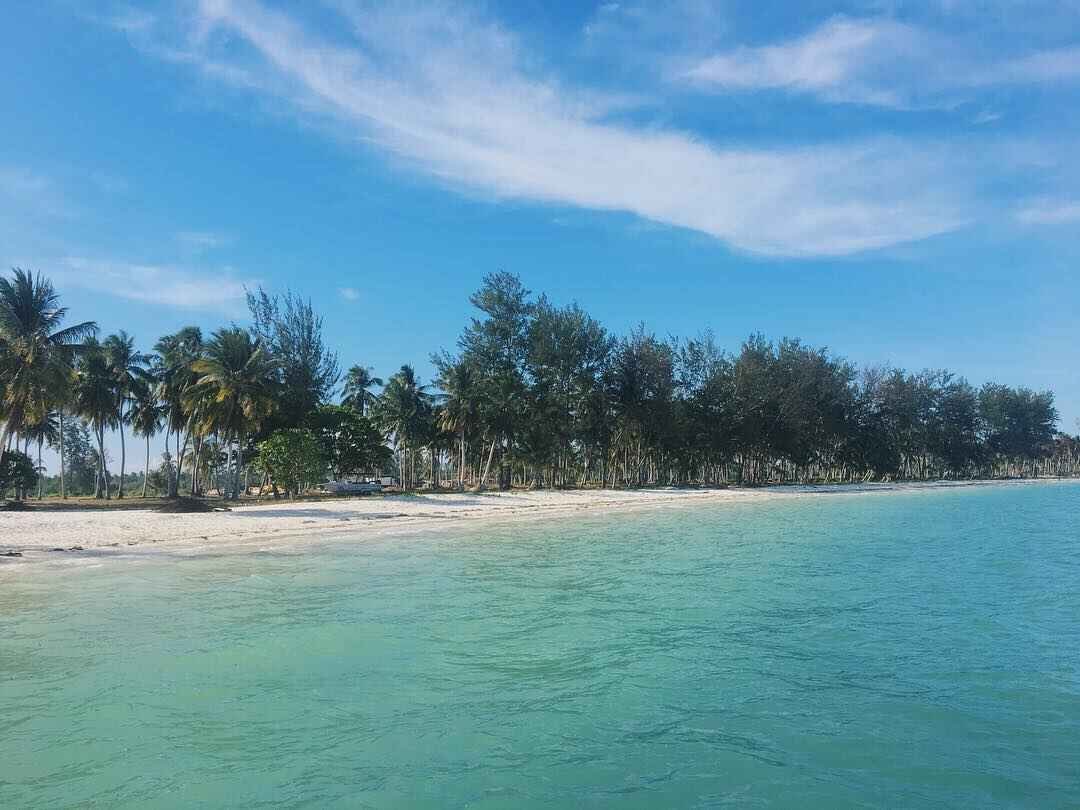
Candaraman Island
If you’re fascinated by marine life, Candaraman Island will be a highlight of your trip to Balabac Island Palawan. Known for its abundance of colorful starfish, this beach is a snorkeler’s dream. The island offers a mix of soft white sand, coral reefs, and an ecosystem teeming with marine life.
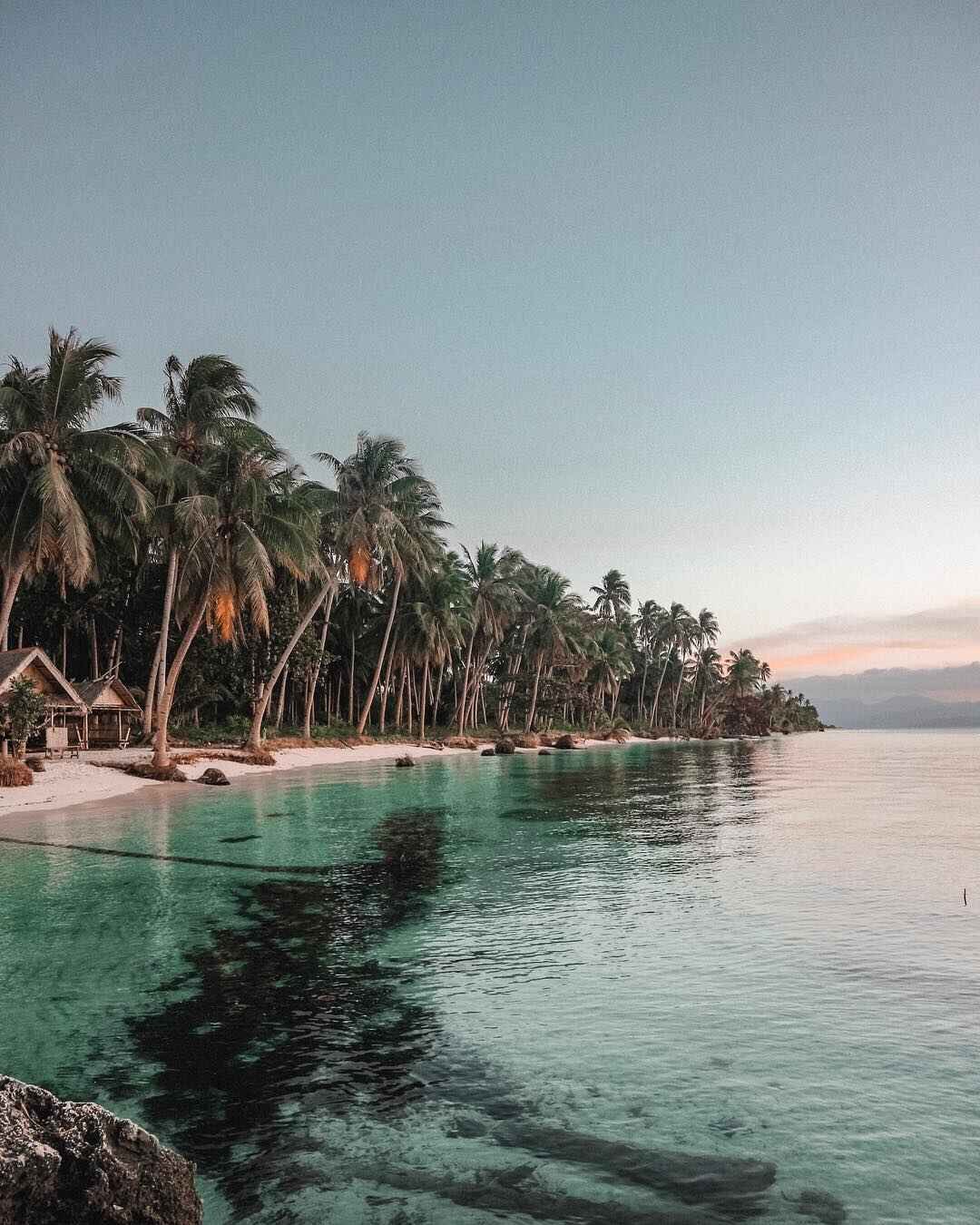
Patawan Island
If you’re seeking a more remote, peaceful beach with fewer tourists, Patawan Island offers an ideal retreat. This small island is perfect for those who love to disconnect and spend time in nature.
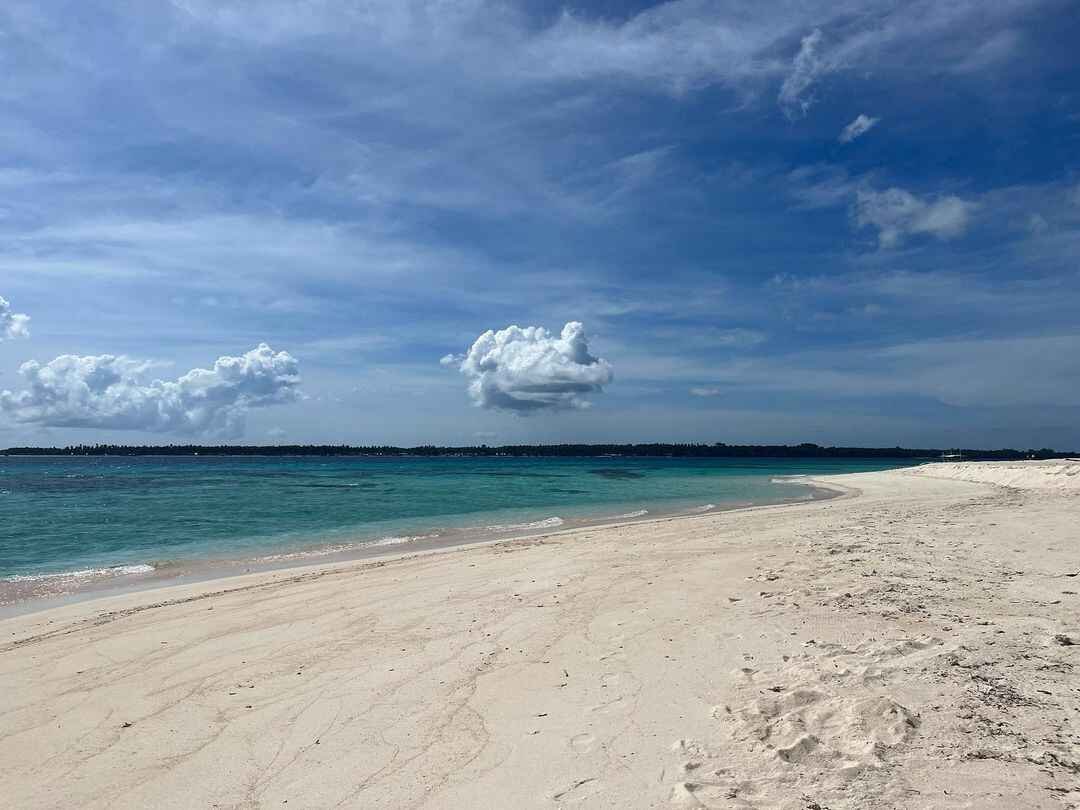
Mansalangan Sandbar
While not a traditional beach, the Mansalangan Sandbar is a unique destination that offers a stunning contrast to Balabac’s dense greenery and lush islands. This long, narrow strip of white sand appears and disappears depending on the tides, creating an otherworldly landscape in the middle of the sea.
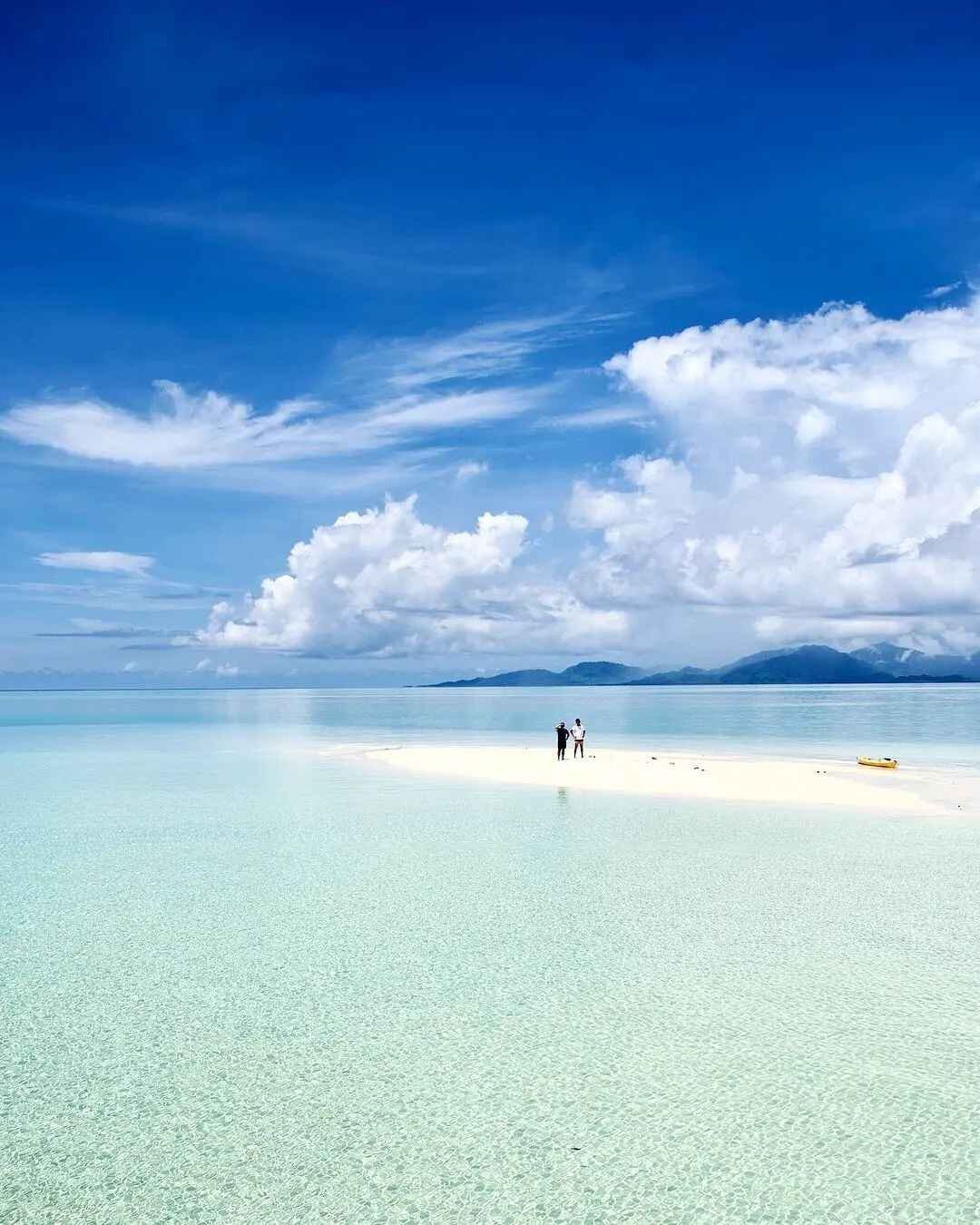
Camiaran Island (Pink Sand Beach)
For a truly unique experience, visit Camiaran Island, also known as Pink Sand Beach. The sand here has a distinct pink hue due to the presence of crushed red corals mixed with white sand, creating a stunning pastel color that sets it apart from the other beaches on Balabac Island.
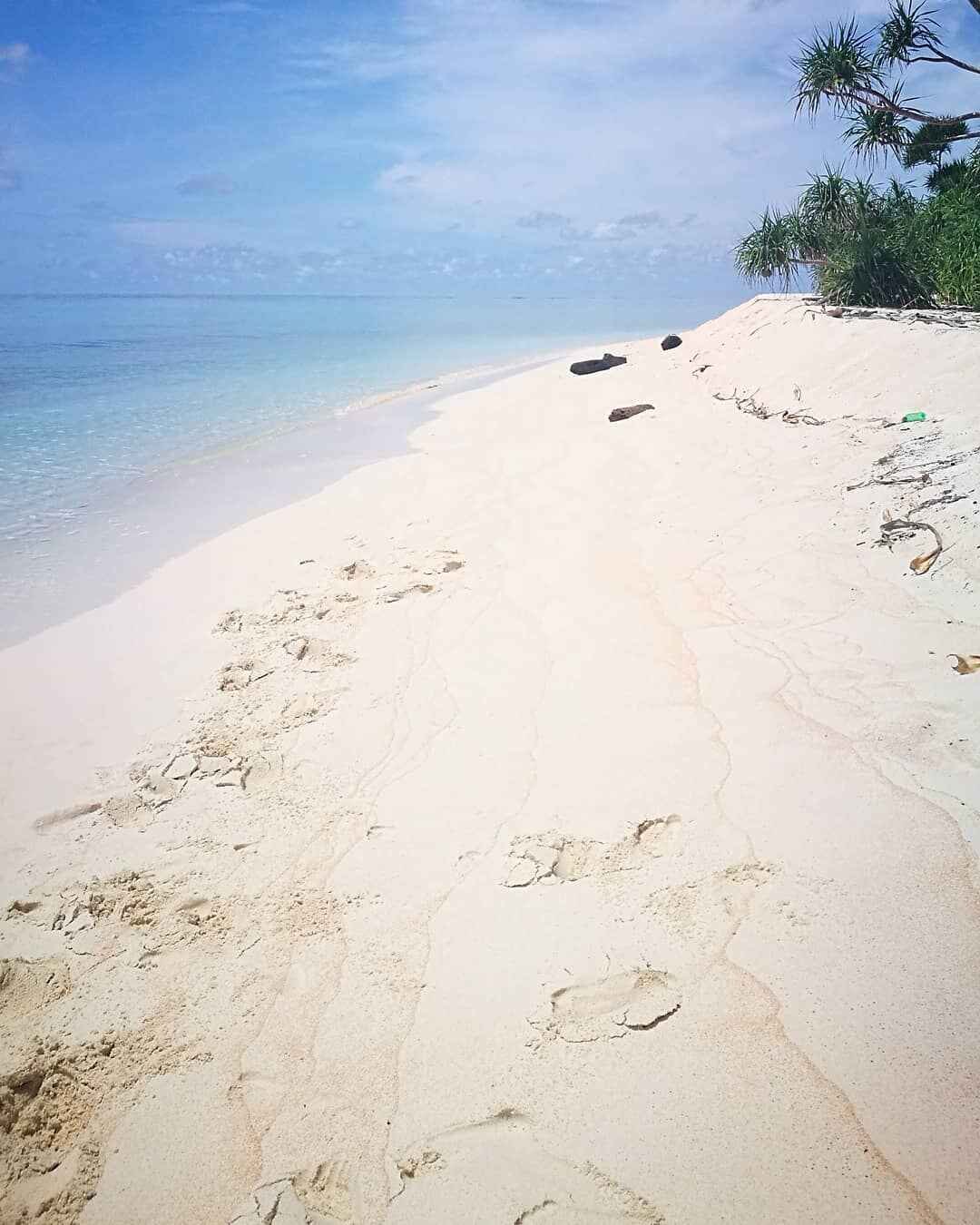
Where to Stay in Balabac Island: Resorts and Accommodation
Given the remote nature of Balabac Island, accommodation options are still limited compared to more developed tourist destinations in Palawan, such as El Nido or Coron. Most options on Balabac Island Palawan are basic, ranging from simple homestays to eco-friendly resorts. However, these places offer comfortable lodging and a chance to experience local hospitality and the natural beauty of Balabac.
Here’s a guide to some of the best accommodation options, including resorts and homestays, to help you plan where to stay during your visit.
Punta Sebaring Eco-Tourism Park
Located on Bugsuk Island, Punta Sebaring Eco-Tourism Park offers a rustic yet comfortable stay right next to the stunning Punta Sebaring Beach, known for its soft, powdery sand. This eco-tourism park focuses on sustainability, making it an ideal choice for travelers looking to enjoy nature while minimizing their environmental footprint.
Rates:
- Cottage Rates: PHP 1,200 to PHP 1,500 (USD 22–27) per night, depending on the season and availability.
- Meals: Meals can be arranged at PHP 250 to PHP 400 (USD 5–7) per meal, with fresh seafood being a popular option.
MLK Lodging Inn
MLK Lodging Inn offers a bit more comfort compared to basic homestays, making it a great mid-range option for travelers looking for clean, comfortable accommodation without breaking the bank. This inn is located near Balabac town and offers easy access to the local boatmen for island-hopping tours.
Rates:
- Room Rates: PHP 1,000 to PHP 2,000 (USD 18–36) per night, depending on room size and amenities.
Camping in Balabac: An Alternative Option
For the more adventurous travelers, camping on some of the islands around Balabac Island is an option. While there are no official campsites, tour operators and local guides can arrange overnight stays on beaches such as Punta Sebaring, Onok Island, or Candaraman Island. You can enjoy stargazing, sleeping under the stars, and waking up to the sound of waves on a secluded island.
What to Expect:
- Basic Setup: You’ll need to bring your own camping gear or coordinate with your tour operator to provide tents, sleeping bags, and other essentials.
- Cost: The cost of camping varies but typically includes the price of the tour package. Expect to pay around PHP 1,500 to PHP 3,500 (USD 27–65) per night, depending on the location and inclusions (such as food and boat transfers).
Balabac Island 5-Day Itinerary and Tour Packages
Balabac Island is a remote paradise that rewards those who make the journey with pristine beaches, vibrant coral reefs, and incredible natural beauty. Given its isolation, a 5-day itinerary starting from Manila offers enough time to explore the best of Balabac without feeling rushed. This guide provides a day-by-day breakdown, along with details on tour packages, to help you make the most of your trip to Balabac Island Palawan.
Day 1: Manila to Puerto Princesa to Rio Tuba
Morning: Take an early flight from Manila to Puerto Princesa, Palawan (approximately 1.5 hours).
- Major airlines such as Cebu Pacific, Philippine Airlines, and AirAsia offer several daily flights from Manila to Puerto Princesa.
- Estimated cost: PHP 1,500 to PHP 4,500 (USD 30–80) one-way, depending on how early you book.
Lunch in Puerto Princesa: Upon arrival, grab a quick lunch in Puerto Princesa. Restaurants around the airport offer a variety of local dishes to start your Palawan adventure.
Overland Travel to Rio Tuba:
- After lunch, catch a van or bus to Rio Tuba, which is about a 5 to 6-hour journey. Vans are faster and leave more frequently, while buses are cheaper but slower.
- Estimated cost: PHP 600 to PHP 1,000 (USD 11–18) for van; PHP 400 to PHP 700 (USD 8–14) for bus.
Overnight in Rio Tuba: Spend the night in a local guesthouse or inn in Rio Tuba to prepare for the next day’s boat ride to Balabac Island.
- Accommodation cost: PHP 500 to PHP 1,000 (USD 9–18) per night.
Day 2: Rio Tuba to Balabac Island and Onok Island
Early Morning Boat to Balabac: Take the first public ferry or a private boat from Rio Tuba to Balabac Island. The ride takes around 4 to 5 hours, depending on sea conditions.
- Estimated cost: PHP 450 to PHP 500 (USD 9–10) for public ferry; PHP 7,000 to PHP 10,000 (USD 125–180) for a private boat (ideal for groups).
Arrive in Balabac Town: Check into your accommodation in Balabac town or a nearby guesthouse. Grab a quick lunch and prepare for an exciting island-hopping adventure.
Afternoon Island Hopping – Onok Island:
- Start your island-hopping adventure by visiting Onok Island, the crown jewel of Balabac’s islands. Spend the afternoon exploring its crystal-clear waters and vibrant coral reefs. Onok Island is perfect for swimming, snorkeling, and enjoying the pristine white sand.
- Tour cost: Island-hopping tours typically cost PHP 1,500 to PHP 3,500 (USD 27–65) per person, depending on the number of islands visited and inclusions (lunch, boat, guide).
Overnight on Balabac Island: Return to your accommodation for a relaxing evening. Enjoy fresh seafood for dinner, which can be arranged by your host or guide.
Day 3: Explore Candaraman Island and Punta Sebaring Beach
Morning Island Hopping – Candaraman Island:
- After breakfast, head out for another day of island hopping, starting with Candaraman Island, known for its abundance of starfish and thriving coral reefs. This island is a great spot for snorkeling and taking incredible underwater photos.
- Relax on the beach, swim, and snorkel in the clear waters.
Lunch on the Island: Enjoy a picnic lunch arranged by your tour guide. Most island-hopping tours include a meal, often featuring grilled seafood and fresh fruit.
Afternoon at Punta Sebaring Beach:
- Visit Punta Sebaring Beach, located on Bugsuk Island, which boasts some of the finest, powdery white sand in the Philippines. The shallow, calm waters here are perfect for a relaxing swim.
- Punta Sebaring is also a great spot for wildlife enthusiasts, as it’s home to various bird species and other wildlife.
Return to Balabac for the Night: Head back to your accommodation for dinner and relaxation after a full day of beach hopping.
Day 4: Mansalangan Sandbar and Patawan Island
Morning at Mansalangan Sandbar:
- Start your day with a visit to the stunning Mansalangan Sandbar. Depending on the tides, this long stretch of white sand appears and disappears, creating a beautiful contrast against the surrounding blue waters. It’s a perfect spot for photography and a peaceful stroll along the sandbar.
Picnic Lunch: Have lunch on a nearby island, as part of your island-hopping tour package. The meals typically include local dishes and fresh seafood.
Afternoon at Patawan Island:
- Continue your exploration with a visit to Patawan Island, a quiet, secluded spot perfect for relaxation. Patawan Island is known for its clear waters, beautiful shoreline, and peaceful atmosphere, making it an ideal place to spend your afternoon swimming and enjoying the serene surroundings.
Optional: Camping on Patawan Island:
- If you’re up for an adventure, you can opt to camp on Patawan Island overnight. Local tour guides can arrange camping gear and meals for an extra cost. Spending the night here gives you the unique experience of sleeping under the stars, far from any light pollution.
- Camping cost: Around PHP 1,500 to PHP 3,500 (USD 27–65), depending on the inclusions.
Day 5: Return to Puerto Princesa and Flight Back to Manila
Early Morning Boat Back to Rio Tuba: Take the morning ferry or a private boat from Balabac back to Rio Tuba. Be sure to confirm boat schedules with your guide to ensure you catch the earliest ride.
- Estimated cost: PHP 450 to PHP 500 (USD 9–10) for the public ferry.
Overland Travel to Puerto Princesa: Upon arriving in Rio Tuba, take a van or bus back to Puerto Princesa (5 to 6 hours).
- Estimated cost: PHP 600 to PHP 1,000 (USD 11–18) for the van; PHP 400 to PHP 700 (USD 8–14) for the bus.
Late Afternoon Flight to Manila: Once in Puerto Princesa, take an evening flight back to Manila to end your Balabac adventure.
- Estimated cost: PHP 1,500 to PHP 4,500 (USD 30–80) one way.
Tour Packages for Balabac Island
Several local tour operators offer Balabac Island tour packages that simplify your trip by organizing accommodation, meals, boat transfers, and island-hopping tours. These packages are particularly useful for first-time visitors, as they handle all the logistics in Balabac’s remote setting.
Sample Tour Package Inclusions:
- Round-trip transfers from Puerto Princesa to Balabac (van and boat)
- Accommodation in homestays or camping gear on islands
- Island-hopping tours to Onok Island, Punta Sebaring, Candaraman Island, Patawan Island, and more
- Meals (usually breakfast, lunch, and dinner with fresh seafood)
- Local guides and boatmen
Estimated Tour Package Cost:
- 3-Day/2-Night Package: PHP 8,000 to PHP 12,000 (USD 145–218) per person
- 5-Day/4-Night Package: PHP 15,000 to PHP 18,000 (USD 270–330) per person
These packages usually offer a full itinerary of island-hopping and exploration, making it a convenient option for those looking to see as much of Balabac Island Palawan as possible.
Conclusion: Why Visit Balabac Island?
In conclusion, Balabac Island Palawan offers a once-in-a-lifetime opportunity to experience the Philippines’ raw, untouched beauty. From its pristine beaches and rich marine life to its welcoming local communities, Balabac Island is the perfect destination for travelers looking to escape the typical tourist trails.
Whether you’re island hopping, snorkeling, or simply soaking in the peace and quiet, your time in Balabac Island will be filled with unforgettable moments. So, pack your bags, leave the crowds behind, and discover one of Palawan’s best-kept secrets.
FAQ: Balabac Island
1. How much does it cost to visit Balabac Island?
A 5-day trip to Balabac Island costs around PHP 6,000 to PHP 12,000 (USD 110–220) for budget travelers and PHP 12,000 to PHP 20,000 (USD 220–360) for mid-range travelers. This includes flights, transportation, accommodation, meals, and island-hopping tours.
2. What to bring to Balabac Island?
Bring enough cash (no ATMs), snorkeling gear, sunscreen, a power bank, insect repellent, a dry bag, and personal medications. Basic amenities are limited on the island.
3. Is Balabac Island safe for tourists?
Yes, Balabac Island is generally safe. Use reputable local guides for island-hopping, avoid wildlife areas, and visit during the dry season (November to May) to avoid rough seas.
4. Is Balabac Island good for solo travelers?
Yes, Balabac Island is suitable for solo travelers. Join group tours for island-hopping, stay in homestays, and enjoy the remote, peaceful atmosphere. Be mindful of safety and stay in contact with local hosts.
5. What are the travel requirements for visiting Balabac Island?
Permits are needed for some islands (handled by tour operators), and an environmental fee may apply. Check for any health or travel protocols, and arrange boat transfers in advance through local operators.

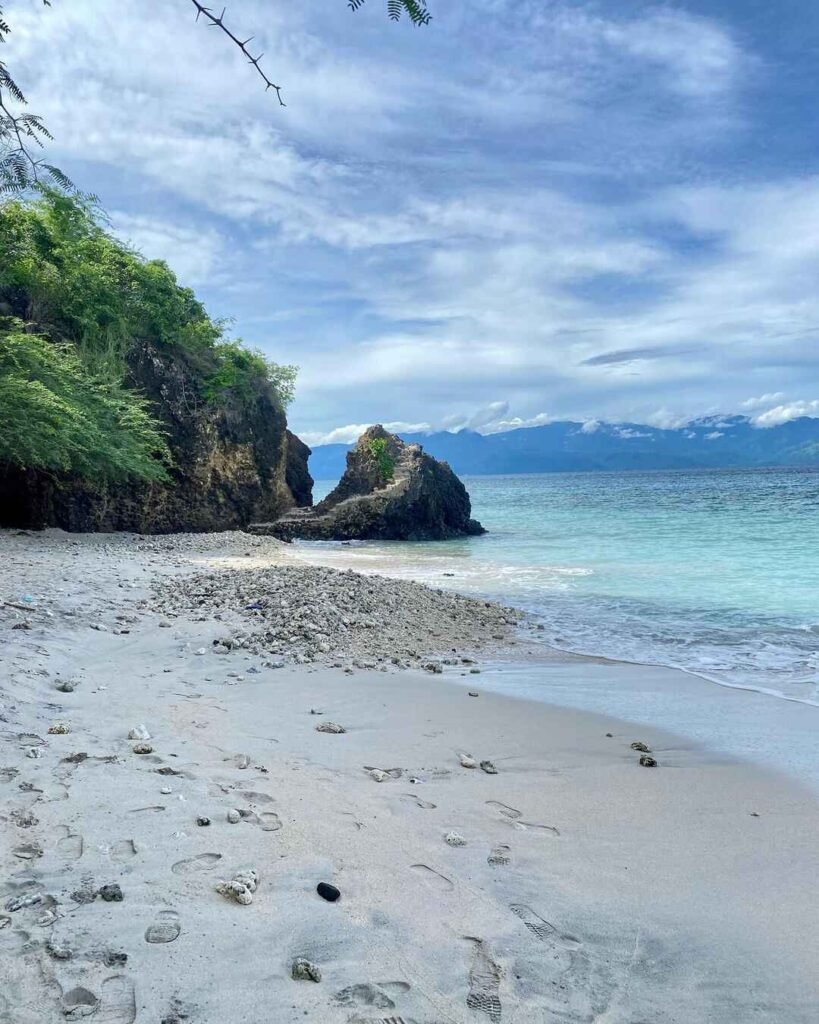
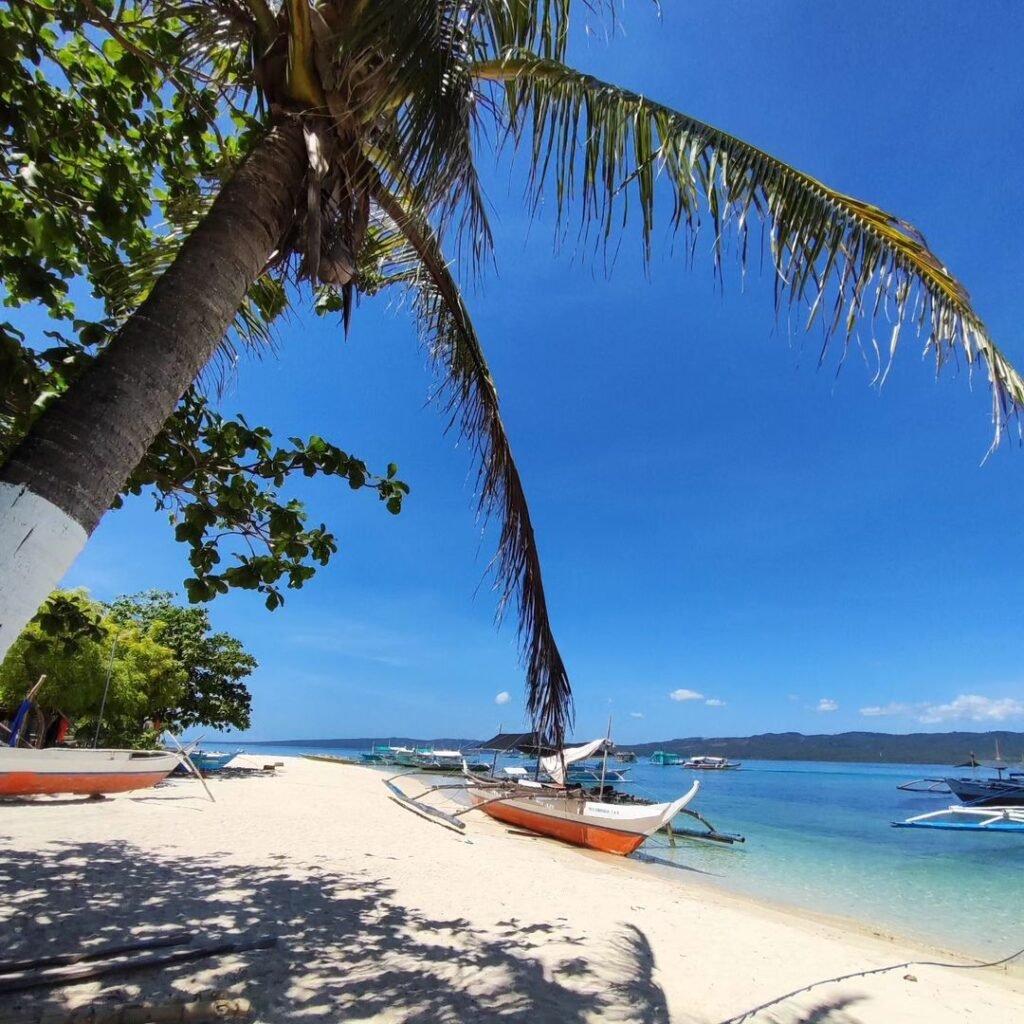
Hello, can you please send me where I can book the itinerary, activities and accommodation to go to Balabac? thank you